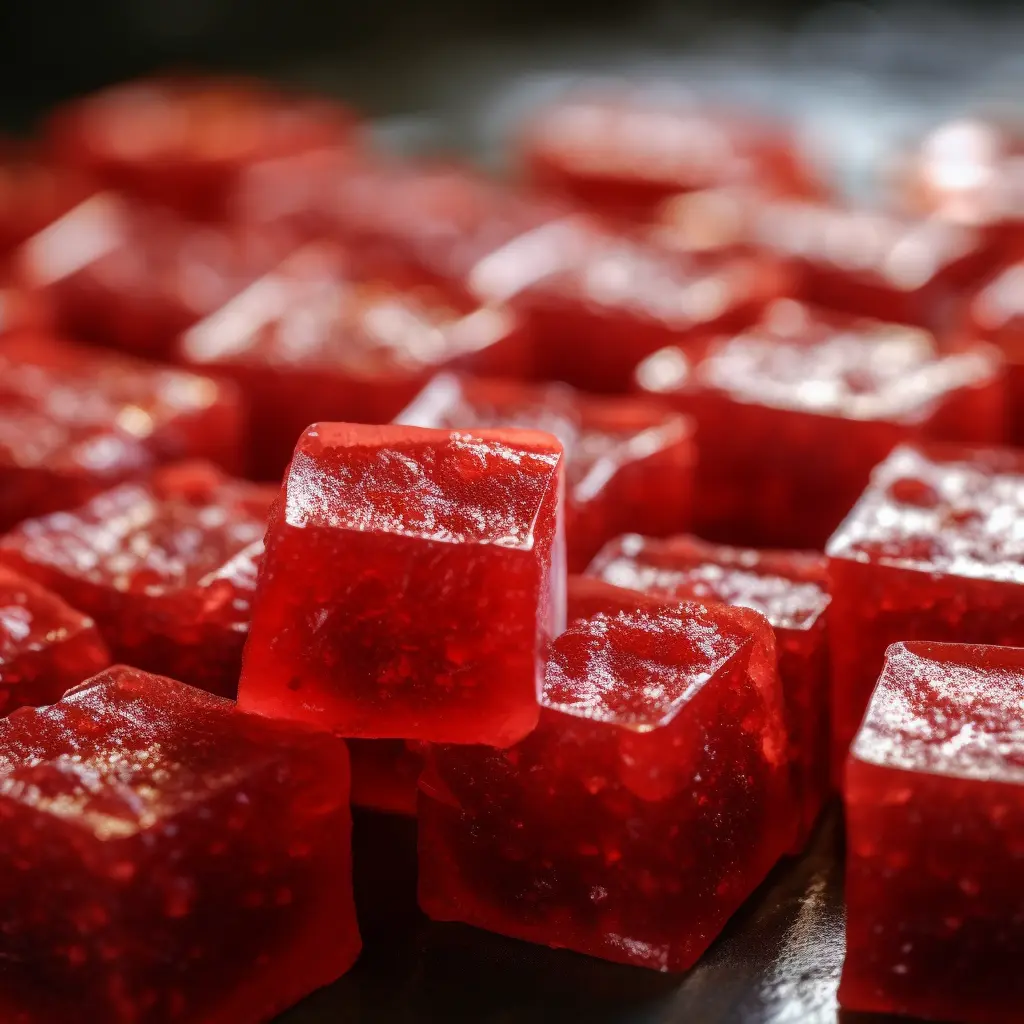
Ingredients
Get them through the links below to support the creator.
Main
- 1200 gram strawberry
- 300 gram sugar
- 3 tbsp lemon juice
- 24 gram agar-agar
- 90 gram coconut
Nutritional Information
Calculated based on standard values with available measurements and may therefore not be accurate.
Nutritional information not available.
Strawberry marmalade
Instructions
Step 1
Prepare all the necessary ingredients for strawberry marmalade with agar.
You can use either fresh or frozen strawberries. If the strawberries are frozen, they should be taken out of the fridge in advance and allowed to thaw. Use the juice that the strawberries will release during defrosting as well. It's important to ensure all the strawberries are free from any rotten areas as this will affect the taste and quality of the marmalade, rendering it unfit for consumption.
Coconut shavings can be added if desired.
Step 2
Rinse the strawberries under running water and allow the excess water to drain off. You can also place the strawberries on a paper towel.
Step 3
Trim off the green stems from the strawberries. Sort through the strawberries. If there are any spoiled berries, they should be discarded without regret.
Step 4
Place the prepared strawberries in a blender bowl. You can also use an immersion blender to crush the strawberries.
Step 5
Add lemon juice to the blender bowl with the strawberries. You can also add lemon or orange zest to taste.
Step 6
Blend the strawberries with the lemon juice until it becomes a uniform puree without chunks.
Step 7
Pour the strawberry puree into a saucepan with a thick bottom. Add a portion of sugar. If the strawberries have a distinctive tartness, you can increase the amount of sugar. However, don't add too much sugar to avoid making the marmalade too fluffy.
Step 8
Add agar-agar to the saucepan with the strawberry puree.
Step 9
Stir the strawberry mixture until it is homogeneous.
Step 10
Warm the saucepan with strawberry puree over low heat, stirring constantly. When the strawberry puree starts boiling, let it simmer for an additional 2-3 minutes. Stir the mixture during the boiling process.
Step 11
Transfer the hot mixture into a silicone mold. You can use a round or shaped mold. Leave the mixture in the mold for 4-5 hours until it completely sets. After cooling the mold with the berry mixture, place it in the refrigerator. Alternatively, you can eat it immediately after it has set.
Step 12
Remove the strawberry jelly from the round mold after it has fully set.
Step 13
Cut the strawberry jelly into square or rectangular pieces. You can also use small cookie cutters to create animal or plant-shaped figures from the jelly. If you use silicone-shaped molds, the jelly will be ready to consume immediately.
Step 14
This portion of ingredients yields 500 grams of finished jelly. Store the strawberry jelly in a closed container in the refrigerator.
Step 15
Roll the strawberry jelly in desiccated coconut if desired. You can skip this step if you prefer.
Step 16
The finished strawberry jelly made with agar has a medium-density texture, a delicate flavor, and a pleasant aroma. This type of jelly can be stored in the refrigerator for 2-3 weeks, and you can enjoy indulging in its vibrant crimson pieces. Bon appétit!
Recipe Story
Strawberry marmalade is a delightfully sweet treat that you can easily make in your own kitchen. A distinct advantage of this recipe is its flexibility. It allows you to use either fresh or frozen strawberries, catering for all seasons and ensuring that you can enjoy this delicious marmalade all year round. The vibrant red colour of strawberries also adds an appealing visual element to the marmalade, making it a feast for the eyes as well as the palate.
One interesting fact about strawberries is that they are packed with vitamins, fibre, and particularly high levels of antioxidants known as polyphenols. Strawberries are a sodium-free, fat-free, cholesterol-free, low-calorie food, making them a guilt-free choice for your marmalade base.
Did you know that strawberries are the first fruit to ripen each spring? They are usually harvested from late April to June, making it an excellent opportunity to use fresh strawberries for your marmalade. If you use strawberries during their peak season, you will benefit from their full, sweet flavour and nutritious qualities.
Cooking this marmalade can be a fun activity to do with children too. As it doesn't require any complex cooking techniques, children can actively participate in the process, making it a delightful family bonding experience. It's a great way to introduce them to the joys of cooking and the importance of homemade food.
When it comes to sweetening the marmalade, you have the choice of using traditional sugar or opting for natural sweeteners like stevia or Jerusalem artichoke syrup. This is particularly useful for those who are conscious of their sugar intake or follow a specific diet regimen. Jerusalem artichoke syrup, for instance, is a lesser-known sweetener that is gaining popularity due to its prebiotic properties.
The recipe calls for the use of agar-agar instead of gelatine, an interesting twist to the traditional recipe. Agar-agar is a plant-based substance derived from a certain type of seaweed, making it suitable for vegans and those observing dietary restrictions, like during Lent. Additionally, agar-agar sets more firmly than gelatin, and the end result can be enjoyed at room temperature, unlike gelatine which requires refrigeration.
Making marmalade at home also provides an opportunity to control the amount of sweetness and the texture of the final product, personalizing it to your own taste. Plus, homemade marmalade can make a thoughtful and personal gift for friends or family. With its blend of simplicity, health benefits, and suitability for a range of dietary preferences, this strawberry marmalade recipe truly offers a sweet solution for everyone.







